How to install a wall-mounted washing machine?
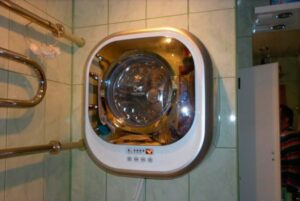 Progress does not stand still - household appliances are constantly being improved, becoming more functional and convenient. A striking example of this is wall-mounted washing machines. Compact machines have become a real lifesaver, because they can be installed even in the smallest bathroom. The original models stand out among their full-size “brothers” due to their dimensions, and at the same time they are not inferior to them in the quality of washing. Installing a Daewoo wall-mounted washing machine is somewhat different from connecting a standard “home assistant”. Let's figure out how to place a compact machine correctly, how to connect communications to it.
Progress does not stand still - household appliances are constantly being improved, becoming more functional and convenient. A striking example of this is wall-mounted washing machines. Compact machines have become a real lifesaver, because they can be installed even in the smallest bathroom. The original models stand out among their full-size “brothers” due to their dimensions, and at the same time they are not inferior to them in the quality of washing. Installing a Daewoo wall-mounted washing machine is somewhat different from connecting a standard “home assistant”. Let's figure out how to place a compact machine correctly, how to connect communications to it.
What do you need to remember when preparing for installation?
You can’t place the original washing machine everywhere. Hanging the automatic machine is allowed only on load-bearing walls, monolithic or brick. Only in this case will the use of the equipment be safe.
It is strictly forbidden to install wall-mounted machines on partitions made of plasterboard, wood, plastic or foam blocks.
If you fix the machine on a “flimsy” wall, there is a high probability that the machine will fly down during operation. This is especially scary when there are children in the house. Also, after such a fall, the chances that the equipment will work properly are very small. Therefore, it is important to choose the right place to install the “home assistant”. A distinctive feature of the “walls” is the absence of a drain pump. Therefore, the equipment must be connected directly to the sewer. The pipes must pass directly under the machine. It is better to try to make the water intake and drainage routes as straight as possible.It is unacceptable for the hoses to have many bends.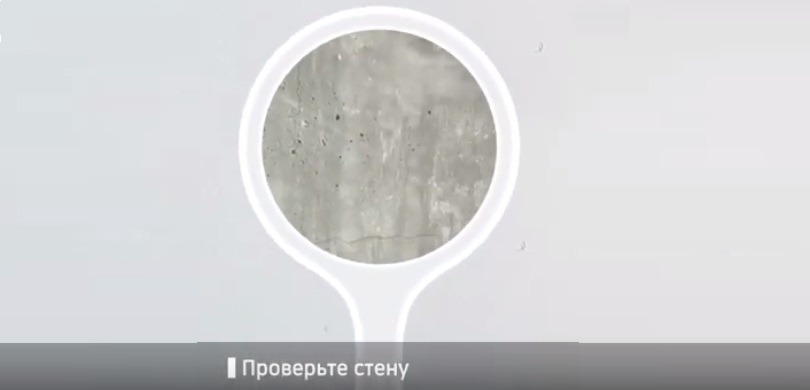
Water from a wall-mounted washing machine is discharged into the sewer after the drain is opened (the process is similar to emptying a bathtub). This is why it is so important to position the corrugation correctly. Modern wall-mounted machines have a stylish design. Therefore, such machines fit organically into the interior of kitchens, bathrooms, toilets and pantries. You can hang them without compromising the overall appearance of the room.
We hang the device
The principle of installing “walls” is similar to connecting standard frontal and vertical washing machines. Before getting to work, be sure to read the instructions for the equipment. The user manual describes in detail the entire process of “hanging” the unit. Included with any “wall” are:
- drain hose;
- power cord;
- anchor bolts;
- inlet hose;
- pipes;
- mesh filter for water purification;
- hose fitting.
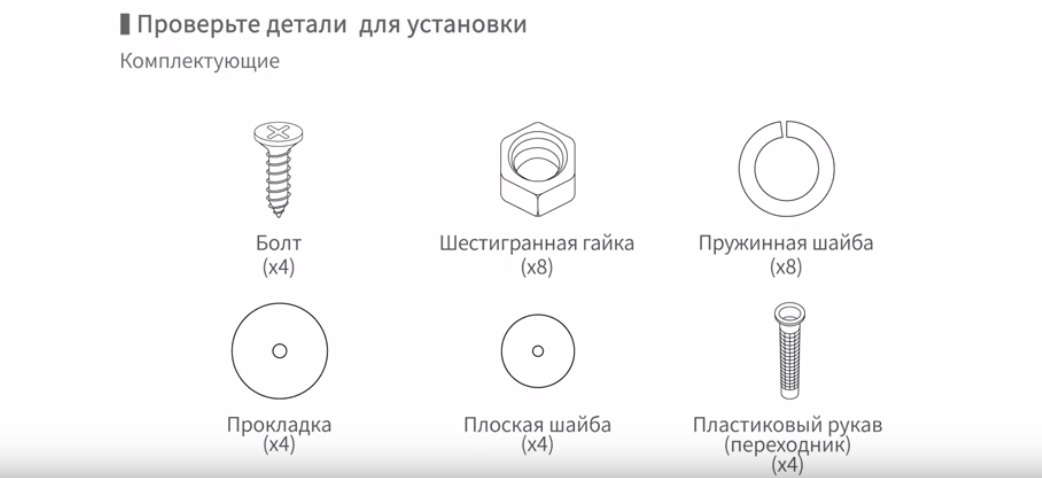
The washing machine is attached to the load-bearing wall using anchor bolts, there are 4 of them in the set. To drill holes in the concrete, you will need a hammer drill. It is important to hang the machine level, so when working you need to use a building level. The drain hose is not very long, so it is important to hang the machine in a place where utility lines pass. We will tell you in more detail how to organize the connection to the water supply and sewerage system and properly prepare the power supply point.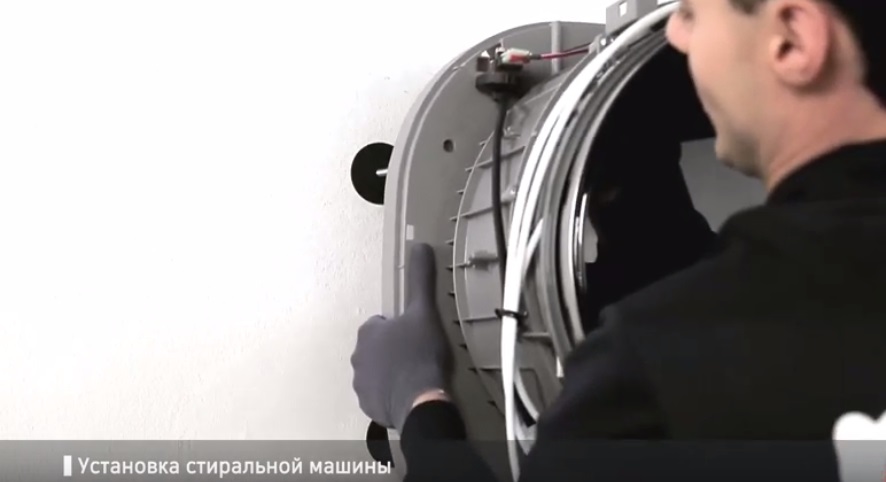
We provide power supply
Connecting the washing machine to the electrical network is thought out in advance. The optimal distance from the machine to the outlet is no more than one and a half meters. This is the length that usually comes with the power cords that come with the machine.It is important that a separate outlet with appropriate voltage and grounding is provided for the washing machine. It is advisable that the point be protected from moisture - have a special cover. It is prohibited to use an extension cord to power the device; this is unsafe both for the machine and for household members.
Grounding in the outlet will protect users from electric shocks and the apartment from fire.
Therefore, you should not neglect the recommendation. It is necessary to provide grounding in the outlet. Otherwise, the machine will constantly “beat” with electric current, causing inconvenience to family members.
We provide the machine with water
Connecting a wall-mounted washing machine to the water supply is done in exactly the same way as when installing a standard machine. In the vast majority of cases, the water intake hose clings to the “cold” pipe. There are wall-mounted models that provide connection to hot water supply. However, experts do not recommend using this opportunity; it is irrational. The washing machine has a built-in heating element, which will heat the liquid to the desired degree. Constant contact of rubber bands and hoses with “boiling water” will only harm the equipment and will not help save money. The disadvantages of connecting machines to hot water are obvious:
- Filters become clogged faster. Everyone knows that hot water contains much more impurities than cold water;
- laundry doesn't wash well. Hot water is harder, therefore, it is more difficult to remove dirt from things, and the detergent is less rinsed.
All the nuances of connecting the “wall” to the water pipe are described in the instructions. Sometimes the manufacturer allows you to attach a hose to hot water.When such an opportunity is not provided, it is better not to take risks, especially since the benefits of such a choice are questionable.
If there was previously another automatic machine in the house, it will be enough to simply secure the inlet hose at the previous outlet point and secure it to the tee tap with clamps. Then you should open the shut-off valve and make sure there is no leakage. When a machine is installed in an apartment for the first time, you will first have to organize a connection point on the water pipe by installing a tee tap. You can make the insert yourself or invite a specialist to do this work.
We organize waste disposal
Next, all that remains is to connect the washing machine to the sewer. The easiest way is to direct the drain hose into the toilet, sink or bathtub. The method has one advantage - it will take a maximum of 5 minutes to work. However, this method is unaesthetic and unhygienic. Plaque will constantly form on the walls of the plumbing fixtures, which needs to be cleaned off.
This option is also inconvenient because you will have to unhook the drain hose from the “wall” and connect the hose every time you wash. Therefore, it is better to immediately connect the washing machine to the sewer. Wall-mounted machines do not have a pump; water flows out of the tank after the “drain” is opened. Therefore, in this case, there is no need to think about the bend of the drainage hose and the height of its inclusion in the pipe. It is enough to simply ensure the tightness of the connection of the corrugation to the sewer outlet.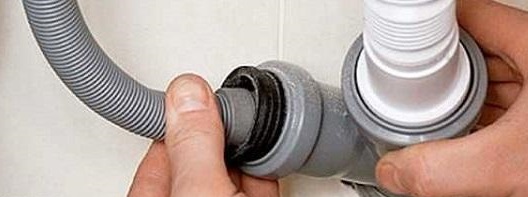
If you follow the instructions, even a beginner can install the “wall.” There is nothing complicated in the work, especially if there was another automatic machine in the room before. After hanging and connecting your wall-mounted washing machine, be sure to run a test cycle with an empty drum. It is important that the spin is performed at maximum speed.If no problems with the operation of the equipment are identified, you can safely start using the “home assistant” for its intended purpose.
Interesting:
Reader comments
- Share your opinion - leave a comment
Categories
Washing machine repair


For buyers

For users

Dishwasher


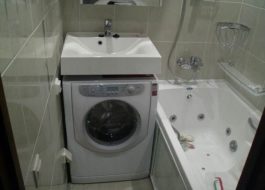

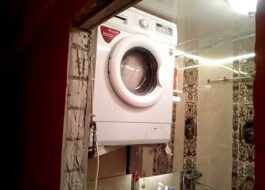
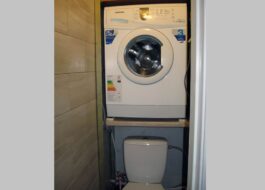











Add a comment